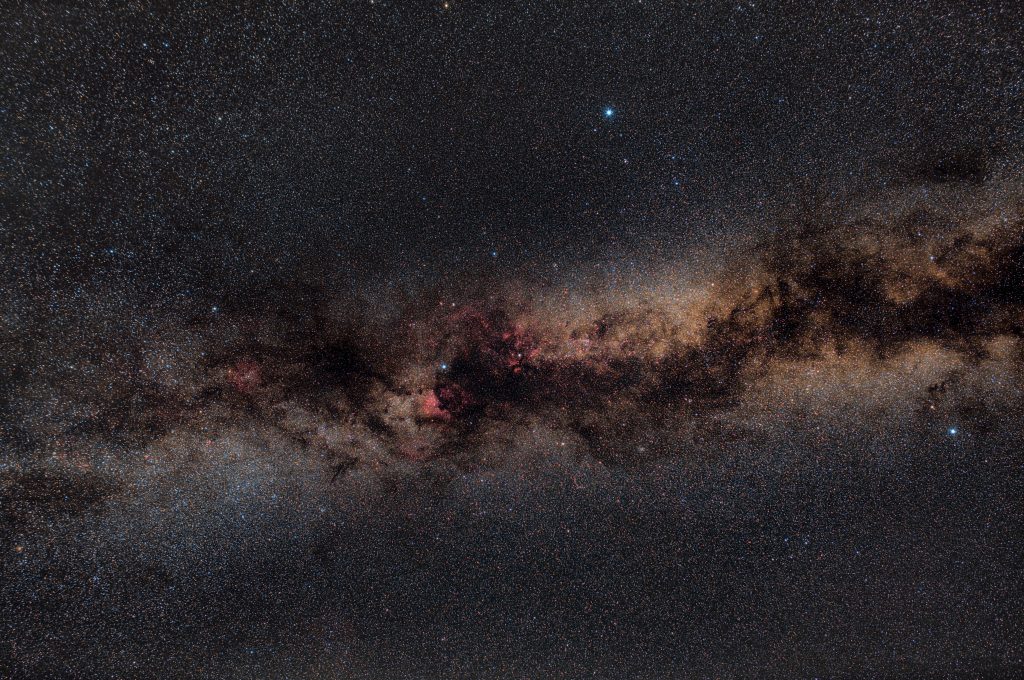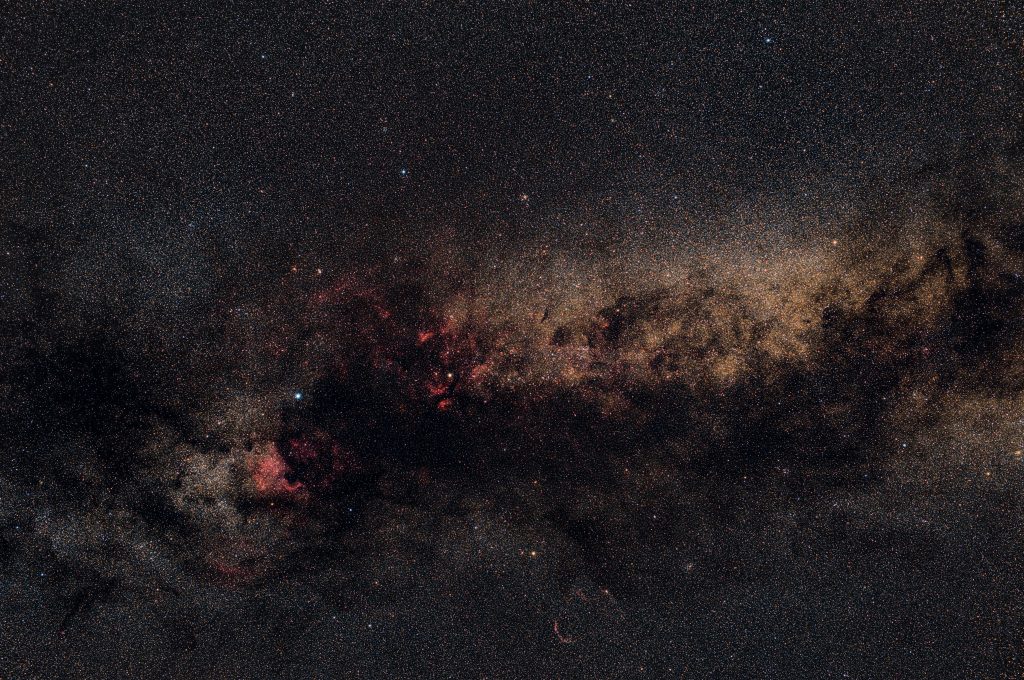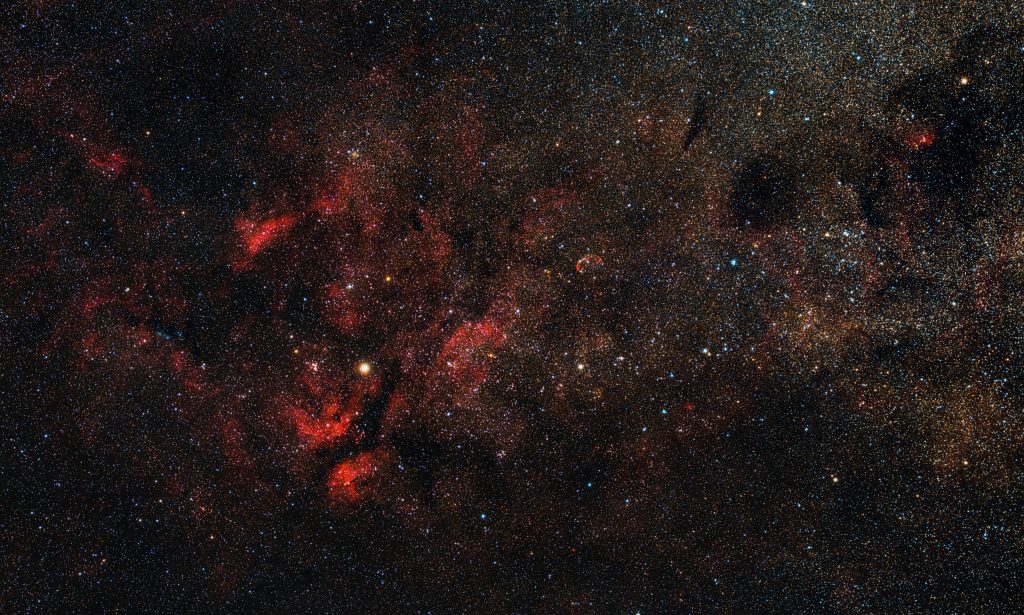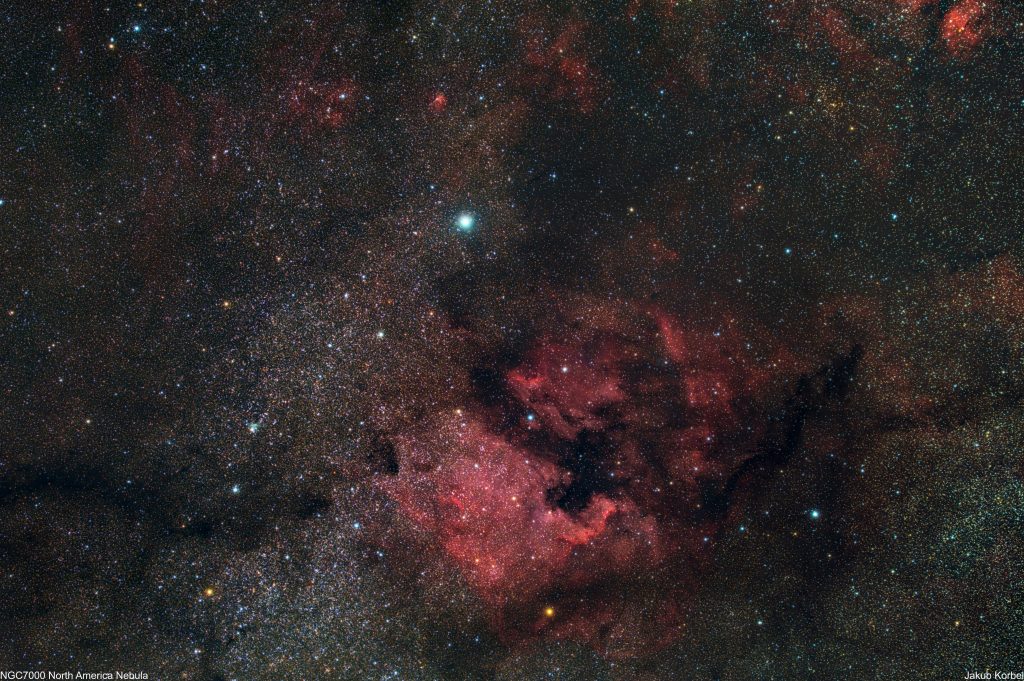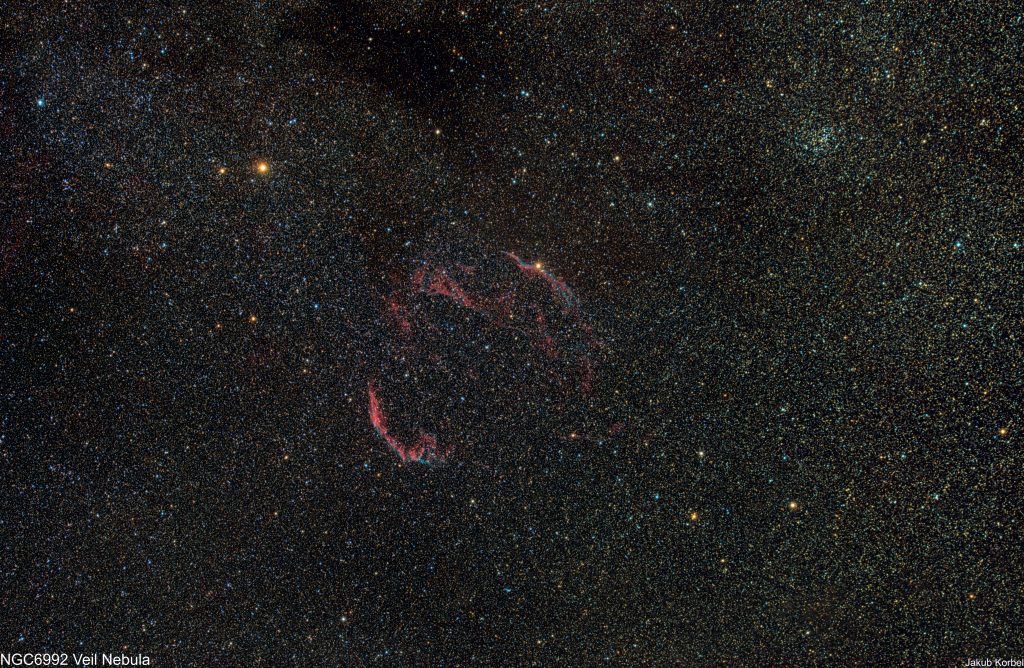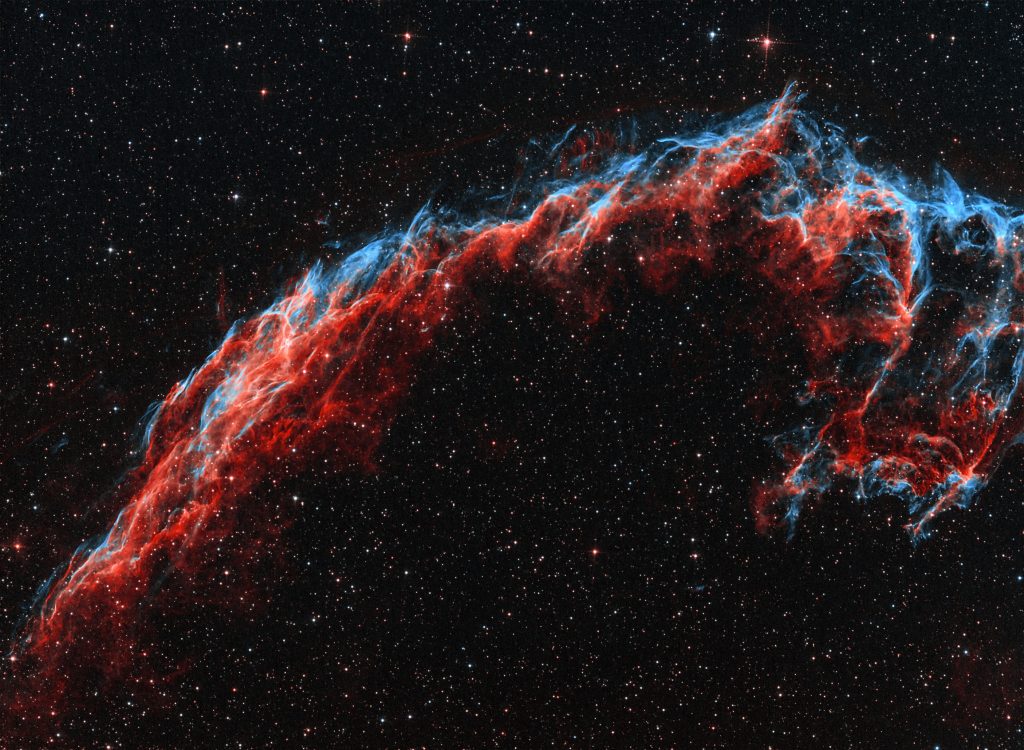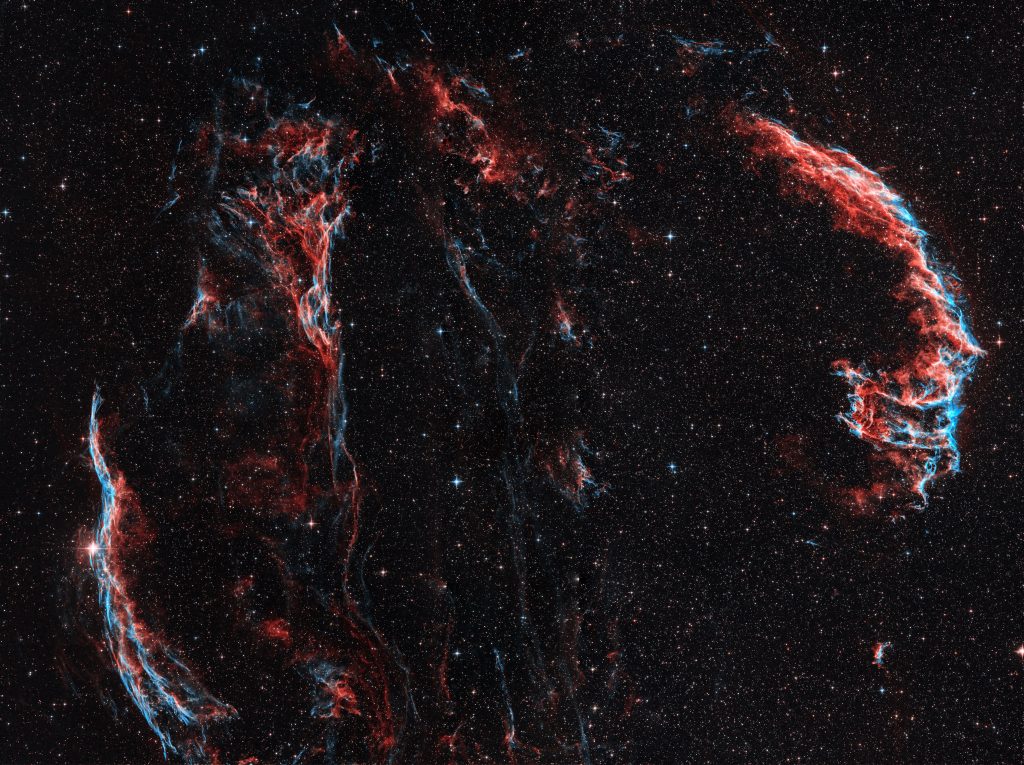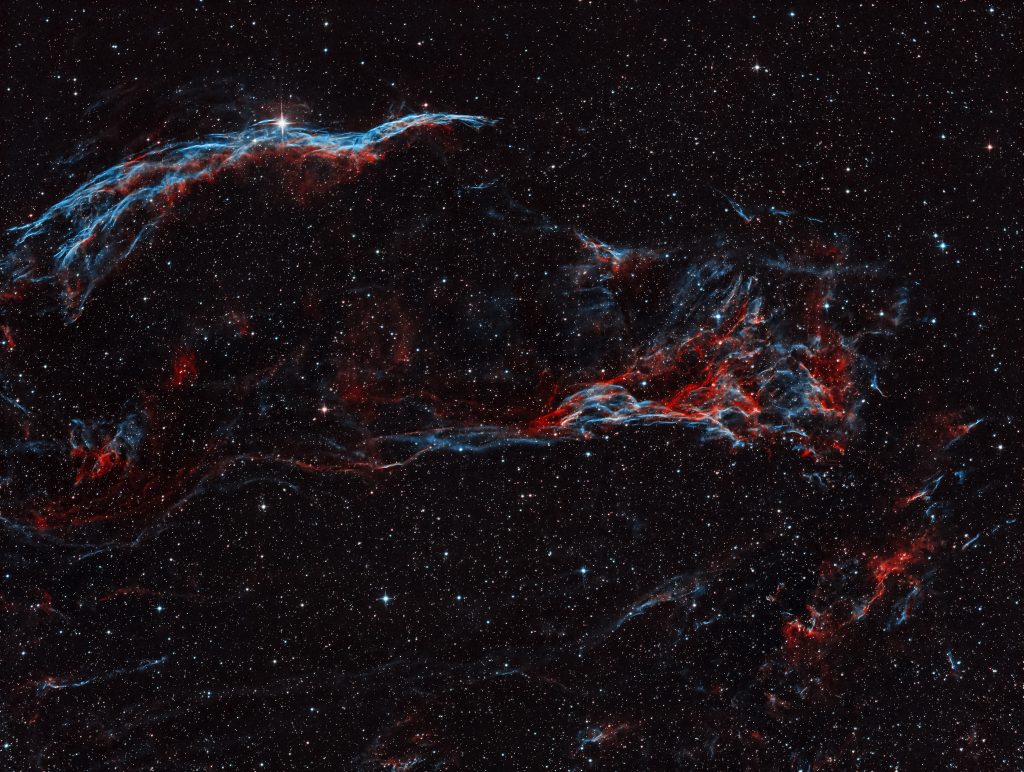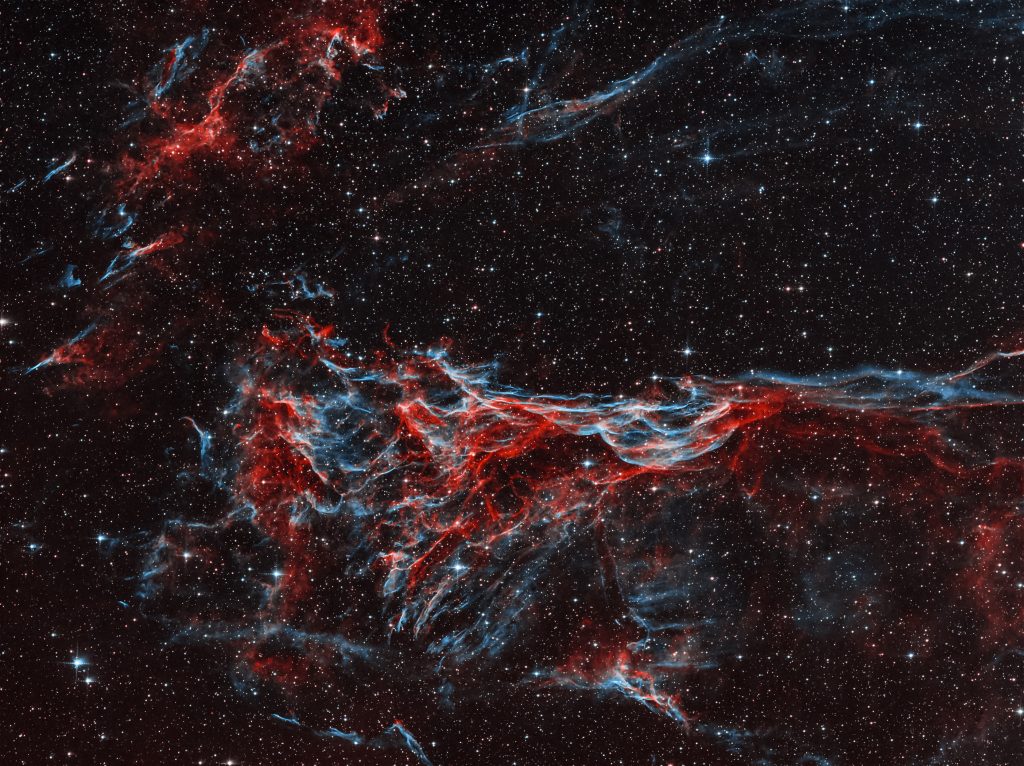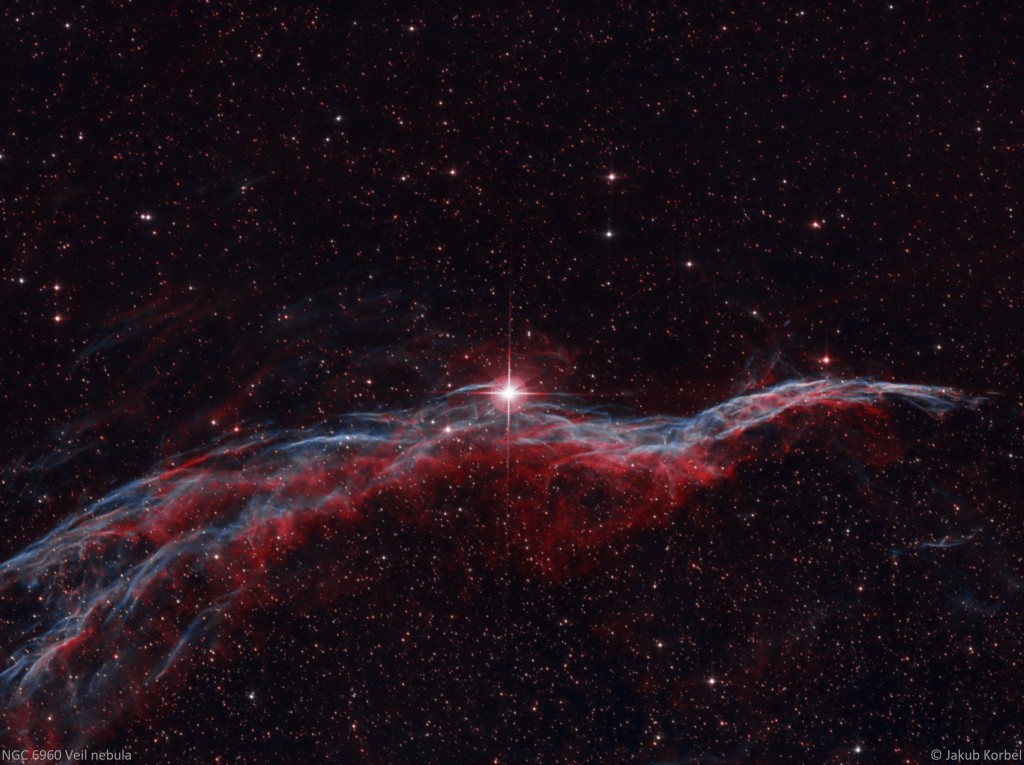Cygnus is a prominent constellation in the northern hemisphere’s summer and autumn skies. Known as the “Swan,” it is easily recognizable due to its distinctive shape, which some people interpret as a flying bird with outstretched wings. In Greek mythology, Cygnus is often associated with the story of Zeus and the transformation of his lover, the beautiful mortal named Leda, into a swan.
The constellation Cygnus is home to several interesting celestial objects. One of the most famous is the Northern Cross, a prominent asterism formed by the brightest stars in the constellation. Deneb (upper right corner), is the brightest star in Cygnus.
In addition to stars, Cygnus contains various deep-sky objects. The North America Nebula (NGC 7000) and the Pelican Nebula (IC 5070) are two emission nebulae located in the region of Deneb. These nebulae are often photographed due to their striking shapes, resembling the continent of North America and a pelican, respectively. Moreover, two supernova remnants can be found in this constellation. The Veil Nebula (upper left) knows probably every amateur astrophotographer, but to find out that there is another remnant called LNB 147 (lower left) was a surprise for me. This one deserves more attention, and if the weather allows, I will try to capture more light coming from there.
Cygnus is also traversed by the Milky Way, making it a rich region for observing star clusters, nebulae, and other deep-sky wonders. Overall, the constellation Cygnus holds a special place in both mythology and astronomy, offering stargazers a captivating celestial experience.
The pictures are a mosaic of 3×4 frames. In total, I captured 342 frames, each 5 minutes long (integration time 28 hours 30 minutes), which were taken during 10 nights in August and September. This makes it my biggest astrophotography project so far.
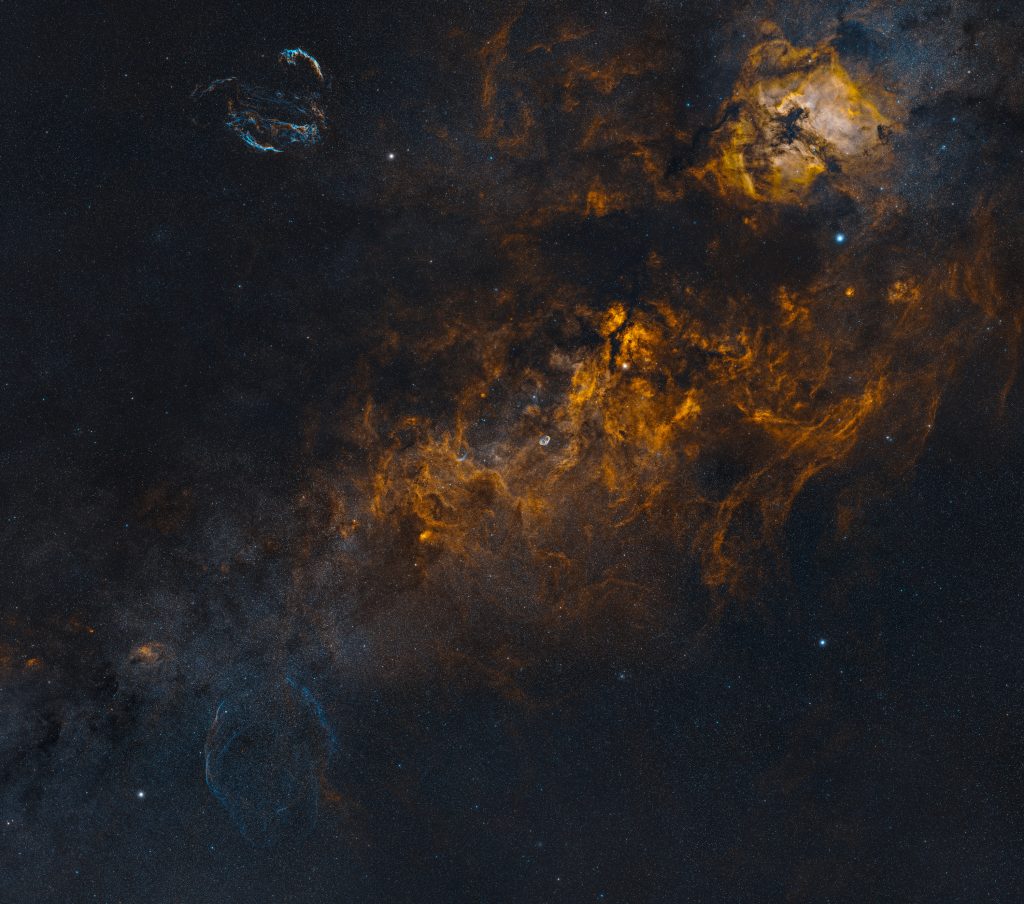
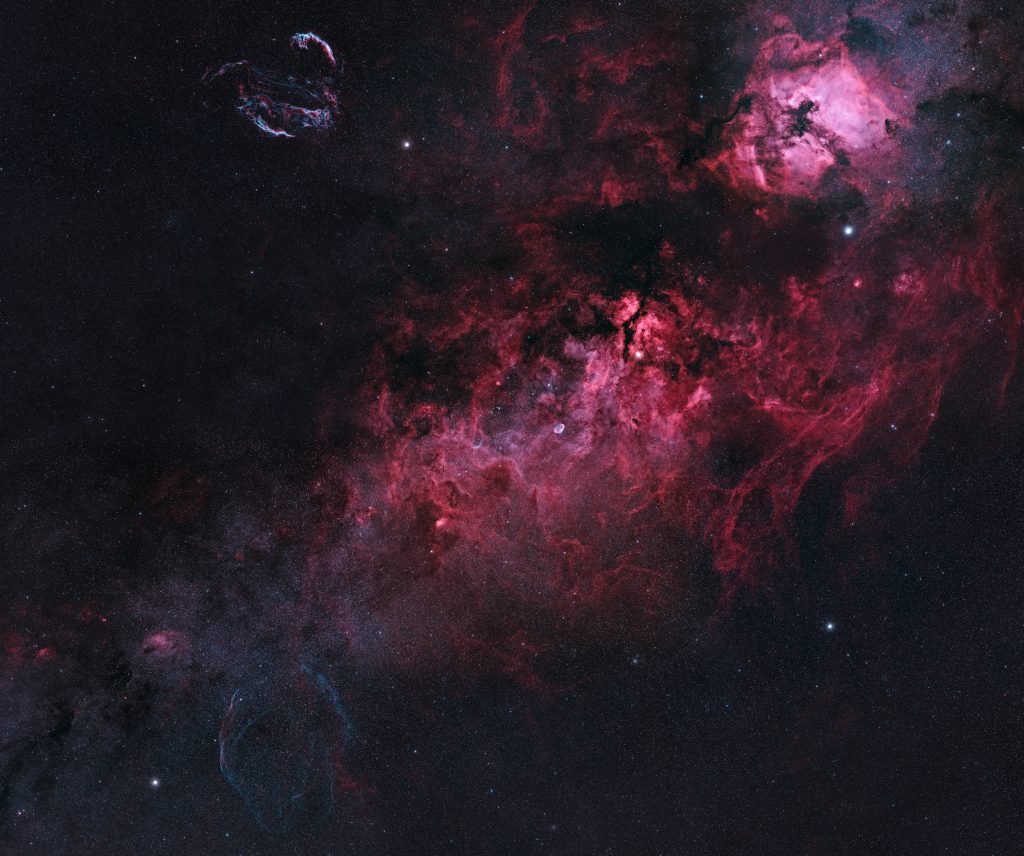
| Telescope | Askar ACL 200 F4 |
| Aperture | 50 mm |
| Focal length | 200 mm |
| Mount | Rainbow Astro RST 135 |
| Autoguiding | ZWO 178MM, QHY Mini Guide Scope |
| Camera | ZWO 6200MC @-10°C |
| Filters | Antlia ALP-T Dualband 5nm |
| Exposure | 342x300s, Gain 100, bin 1×1, |
| Date | 2023-09-12 2023-09-15 2023-09-05 2023-09-06 2023-08-23 2023-08-24 2023-08-16 2023-08-21 2023-08-22 2023-08-11 2023-08-22 2023-08-23 |

